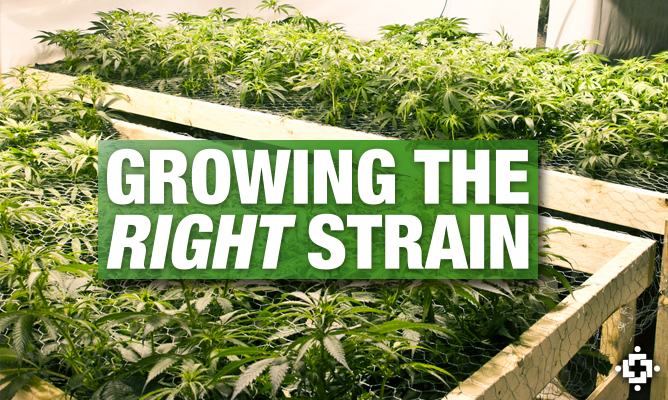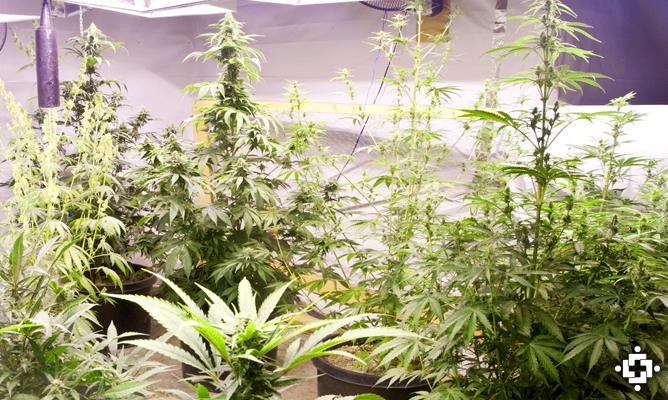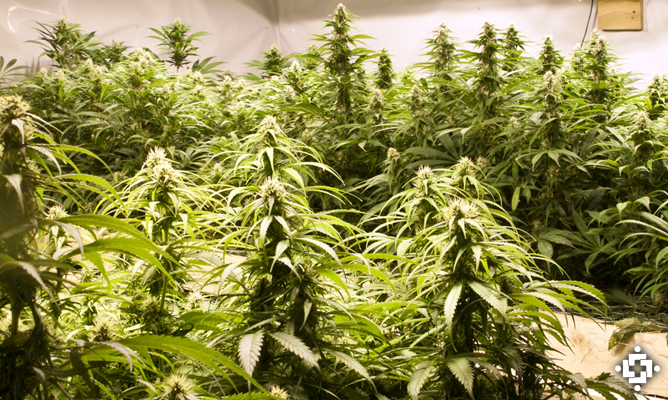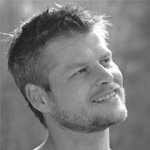
Choosing The Right Cannabis Strain For Your Indoor Garden
Last time in this practical series about growing medical marijuana from home, we talked about some of the important things that need to be weighed in on in considering a site or location to grow indoors, under lights, on a scale that suits your needs and limits. Now let’s look at a few factors to consider when choosing which strain(s) to grow.
Not only will you be forced to choose which strain you want, but you’ll also want to consider whether cultivating from seed or clone is the best option. It’s worth noting that the growing environment can have a strong influence in the physical traits from the genetics too. So, different grow room conditions can (and will) produce differing results.
Growing From Clone VS Growing From Seed
In areas where cultivation is permitted, you’ll likely be able to get your cuttings or clones readily. However, the selection often offers a narrow range of choice in their medicinal effects. For example, they are all different types of “Kush” that have extremely similar effects, with perhaps a few Sativa strains to choose from.
Nonetheless, there are a number of benefits to growing from clones that are healthy and free of insects. These include:
Known sex (female) – this will make buds with lots of resin, not pollen. It also means less potential for accidental seeding in your garden.
They are often available after harvest if you want to start another crop; no need to keep separate growing areas as a nursery for producing transplants.
The source of your clone should be able to provide very valuable growing information. Of course, this is also true when working with a reputable seed source.
Growth habits and finishing times will be even for each plant from the same clone – this allows for a uniform grow cycle throughout your garden.
Starting from seed gives you a much wider spectrum of possibilities to choose from. Seed selections can be vast with an ever-growing number of cannabis seed breeders, seed banks, and collectives.

You will want to add an extra ten days or more to the cropping calendar for germination and establishment of seeds into young plants, but there are some important advantages in starting from seed. Some of these include:
Starting problem free with lots of vigor – no insects or diseases are carried over from seed. Experienced growers know how important this is for success.
F1 Hybrids (first generation crosses) can demonstrate a natural phenomenon known as “hybrid vigor”. Offspring show the best of both parental selections in proven hybrid crosses.
Cannabis plants started from seed develop a tap root, clones do not. A tap root anchors the plants more firmly, and can help prevent a medium-to-large cannabis plant with lots of weight from topping over in the wind.
You can start new plants as needed, because seeds can be stored.
Using stable, ‘feminized’ seeds over regular seeds can ensure 100% females plants that grow and finish nearly the same, time after time.
Note: Regular seeds allow you to select for particular traits through slight to significant variations exhibited from the cross of parental plants. However, you will have to pull out a few males from the garden to produce seedless buds.
Choosing The Right Cannabis Strain For Your Needs, Space
If you have limited height, selecting a plant that finishes at a reasonable size while giving you the qualities you desire should be near the top of your list. Pure Indica strains like many Afghani landraces tend to stay very tight in growth, with effects typically being more physical.
Areas with strict plant counts typically require growers to finish plants at a larger size to keep medicine on hand in a quantity that suits the patient’s needs. In these situations, vertical height was taken care of in site selection, and a variety that grows big quickly becomes a strong part of the selection process. Some plants take two or three times longer to gain enough stature prior to the budding phase to yield the same quantities as others.

Sativa dominant strains (ex. Haze or Thai varieties) can get huge fast. During vegetation, the spacing between budding sites can be wide compared to Indicas. Lots of light gets in the plant canopy and there is less trimming labor required at harvest – they can fill out very large with heavy yields. If space is tight, it’s better to avoid Sativa growth traits in your selection.
“Consider your needs carefully and work backwards to your strain selections from there.”
The typical solution for most growers rests in hybrid strains – balanced crosses of desired sativa and indica traits. Some popular hybrids that have surfaced in recent years include Candyland, Platinum Cookies, and Grand Daddy Purple.
It’s recommended that you dedicate the first crop to selecting a mother plant to clone from seed. Some crosses will be more stable than others with seed, and a wide variety can mean a wider array of choices you can make for traits you desire (effects, yield, growth habits, etc.). Once a selection is made, you have your very own strain for as long as you maintain the mother plant.
Still, some patients require more consistent and immediate results. Clones or feminized seeds are a solid choice in this case, given that they are from reputable sources. From here, growers can go straight into bud production if the plants perform as anticipated in terms of size, growth habits, and harvest qualities.
Consider your needs carefully and work backwards to your strain selections from there. If you do, you’ll spend more time kicking back and enjoying you home-grown medicinal relief, rather than battling trying to make your strain selection fit like a round peg in a square hole.
For the next segment of this series, we are going to talk about setting up your designated grow area.
Erik Biksa has been writing about and discussing hydroponics growing, related technologies and cropping methods since 1999 in a variety of professional publications and platforms globally Erik has travelled the world learning and teaching modern …
